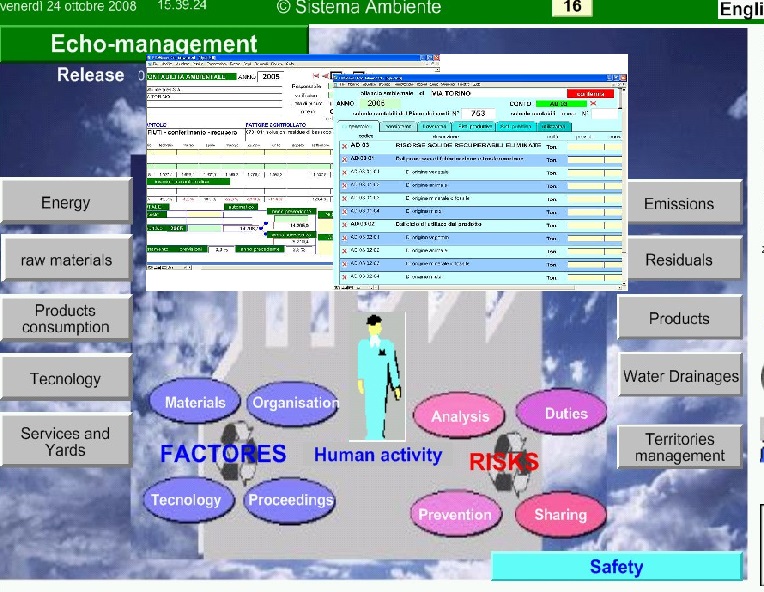
2019: by 2030 to change development and to avoid disaster
towards a total situation without return

Read: News of UNFCCC
Timeline of climate change negotiations
COP24: Paris Agreement Rulebook 'Does Not Deliver What The World Needs'
COP 24:
After two weeks of crunch negotiations – with overtime – the almost 200 parties gathered in Katowice, Poland, for the United Nations COP24 two-week climate change conference, adopted on Saturday a “robust” set of implementing guidelines for the landmark 2015 Paris Agreement, aimed at keeping global warming well below 2°C compared to pre-industrial levels.
Poor countries have also been assured of financial support to help them reduce their emissions, adapt to inevitable changes such as sea level rise and pay for the damage already done.
Finally, a decision on the mechanisms of an emissions trading system was postponed to next year's meeting. Countries have also decided to consider raising the issue at a UN summit in New York next September.
The rules of application specify how to count emissions, starting from 2024, and what to count, following the Giec's instructions. They provide that countries submit a report every two years explaining their actions, subject to expert evaluation but without being able to pave the way for sanctions.
Flexibility is granted to least developed countries and island States, depending on their capabilities. Other developing countries must provide an argument and a time frame.
Every five years, starting in 2023, countries will make a "global assessment" of their collective efforts.
COP 24:
At the beginning of 1900 , mankind produced 2 billion tonnes of CO2 per year , producing today 35 billion tonnes .
Last year, there was a new 2% increase . By continuing this way, the warming of the planet can increase by 3 ° to 5 ° C , also causing the melting of the polar ice caps and an increase in the oceans that can flood vast areas of the planet.
Fossil Fuels Produce 80% of All CO2 and Worldwide.
Energy consumption is not the same in all countries:
Saudi Arabia consumes 294 gigajoules each
United States 290 gigajoules each
Europeans 130 gigajoules each
The Chinese 99 gigajoules each
Nigerians 31 gigajoules each
The Indians 28 gigajoules each
The Ethiopians 22 gigajoules
However, as global warming is a global phenomenon, those who will experience the effects of the disaster sooner will not be the countries that produce more CO2, but
most of those who have less responsibility.
Increasing costs of climate change:,
Some countries and populations are already feeling the increasing effects of climate change: drought, floods, more intense and frequent natural disasters, rising sea levels , among others.
The impact of extreme climate events is $ 520 billion in annual consumption losses and plunges 26 million people into poverty every year .
Climate change is already having visible and measurable effects on human health, and these effects are expected to increase. Every year, carbon-related co-pollutants cause more than 7 million premature deaths , and it is estimated that the cost of direct damage to health will be between $ 2 and $ 4 billion per year. year to 2030.
Undernourishment will be one of the most serious health effects. Globally, a 6% decline in wheat yields , and 10% reduction in rice are expected for each new 1 ° C increase in global temperature, with serious consequences in terms of undernutrition and stunting among children: it is estimated that the number of stunted children will increase by 7.5 million by 2030 < BR>
More than 143 million people could be forced to migrate by 2050, in order to escape drought and poor harvests.
.

Every day around 93% of the world’s children under the age of 15 years (1.8 billion children) breathe air that is so polluted it puts their health and development at serious risk. Tragically, many of them die: WHO estimates that in 2016, 600,000 children died from acute lower respiratory infections caused by polluted air.

Read: Mediterranean UNESCO World Heritage at risk from coastal flooding and erosion due to sea-level rise
Place of marine biodiversity, the Mediterranean is home to 10,000 to 12,000 marine species, a quarter of which are endemic. Nevertheless, the basin is under strong anthropogenic pressure from its coastline to the sea, which considerably increases the fragility of its ecosystems.
The average annual temperature has already increased by 1.4 ° C compared to pre-industrial temperatures, compared to an average of 1.1 ° C worldwide.
More frequent droughts and heatwaves, erosion of marine biodiversity, decline in agricultural productivity, recrudescence of infectious diseases due to mosquitoes, etc. countries in this region are (and will be) increasingly affected by the cascading effects of climate change, especially vulnerable, in the South.

Footprint calculator for mobile devices is available, click
WHAT IS YOUR
Ecological Footprint?
How many planets do we need if everybody lives like you?
When is your personal Overshoot Day?
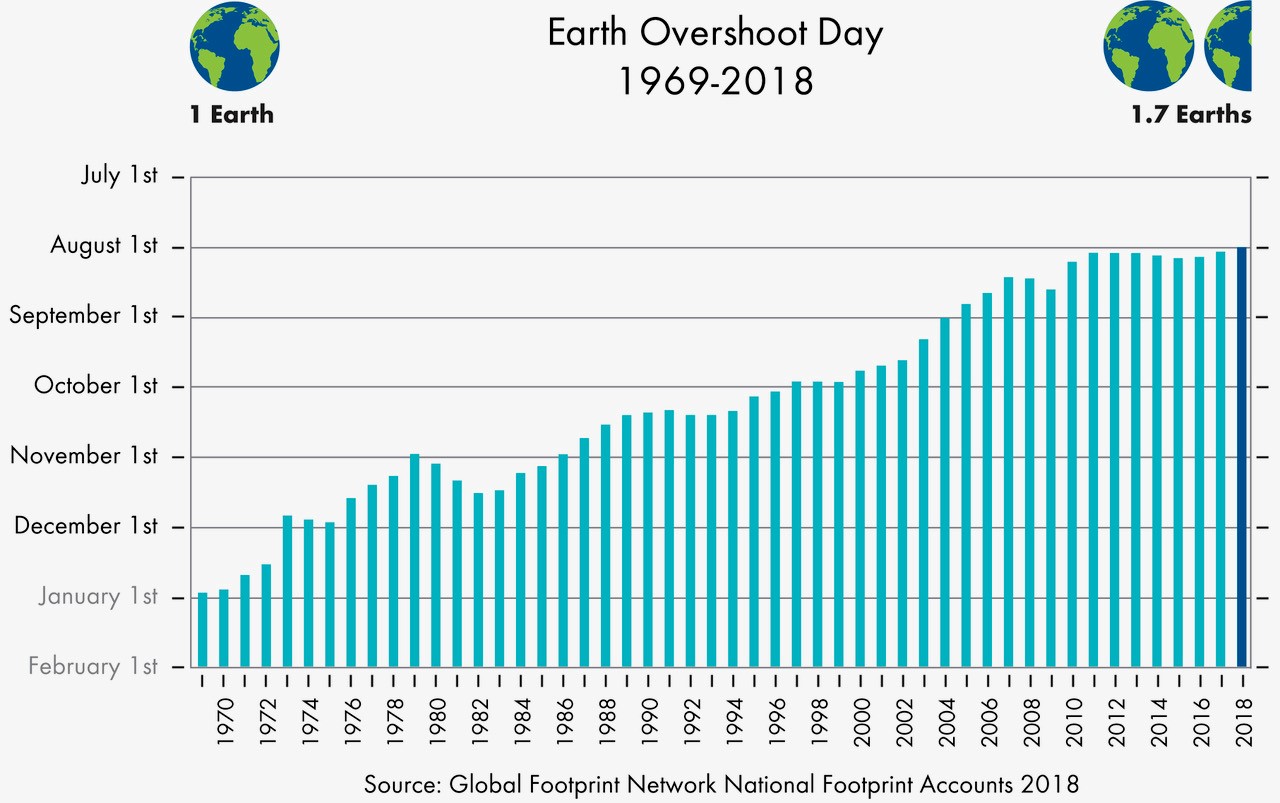
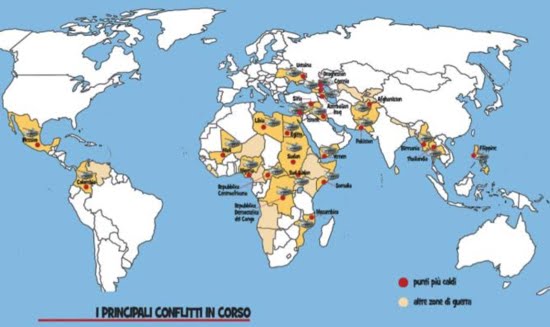
The wars in the world are dramatically increasing: 378 total conflict in 2017, of which 186 violent crises and 20 high-intensity wars.
The analysis confirms that increasing production and sales of all types of weapons, from reading the atomic attack.
A phenomenon that, according to experts, due to the fact that states are now convinced that to win wars, serve arsenals increasingly rich and powerful.
Alarmingly the fact that among the six top exporting countries, five are the permanent members of the UN Security Council.
How to produce and work
In the world: :
Every 15 seconds, a worker dies of an accident or illness related to
work.
Every 15 seconds, 153 workers are involved in an accident related to work.
Every day, 6,300 people die from work-related injuries or illnesses - more than 2.3 million deaths a year .
Most 317 million accidents that occur each year result in prolonged absences from work.
The human cost of this daily threat is considerable and the burden is
of poor occupational safety and health practices represents, every year, 4 per cent of gross domestic product.
.
In United States:
5,147 workers were killed on the job in 2017 (3.5 per 100,000 full-time equivalent workers) — on average, more than 99 a week or more than 14 deaths every day.
20.7% were in construction.
Top 10 Most Common Workplace Injuries
Fall protection, Hazard communication standard, Scaffolding, general requirements, Respiratory protection, Powered industrial trucks, Control of hazardous energy (lockout/tagout), Ladders, Electrical, wiring methods, components and equipment, Machinery and Machine Guarding, Electrical systems design, general requirements.
Disease and Injury:
Allergic and Irritant Dermatitis, Asthma and Chronic Obstructive Pulmonary Disease,
Fertility and Pregnancy Abnormalities, Hearing Loss, Infectious Diseases
Low Back Disorders, Musculoskeletal Disorders of the Upper, Extremities
Traumatic Injuries

Dangerous substances,
— any liquid, gas or solid that poses a risk to workers’ health or safety — can be found in nearly all workplaces. Across Europe, millions of workers come into contact with chemical and biological agents that can harm them.
In fact, in 2015, 17% of workers in the EU reported being exposed to chemical products or substances for at least a quarter of their working time, a proportion practically unchanged since 2000, and 15 % report breathing in smoke, fumes, powder or dust at work.
Some highly dangerous substances — such as asbestos or polychlorinated biphenyls (PCBs) — are now banned or under strict control. However, other potentially harmful substances are still widely used, and legislation is in place to ensure that the risks associated with them are properly managed.
The health problems that can be caused by working with dangerous substances range from mild eye and skin irritation to severe effects, such as birth defects and cancer.
Effects can be acute or long term, and some substances can have a cumulative effect. Some of the most common dangers are:
Allergies
Skin diseases
Cancers
Reproductive problems and birth defects
Respiratory diseases
Poisoning
Some dangerous substances pose safety risks, such as risk of fire, explosion or suffocation. In addition, dangerous substances normally have several of these properties.
According to estimates, cancer is the leading cause of occupational deaths in the EU. It is obvious that additional efforts are possible to reduce the number of cases of occupational cancers.
Information on the risks of substances and their handling must be provided throughout the production chain by manufacturers and suppliers.
Change the mode of production,
basis for sustainable development, economic growth and labour
The first report on ethical and lasting finance in Europe thinks that the sum of financial activities linked to climate is equal to 715 thousand million euro, is about 5 % complete gross domestic products of the European Union.
Read: How Climate Change Affects Financial Performance
Following the agreement of Paris, concerns linked to climatic change became a motive force, new "green" financial products appeared and obligations linked to climate go on of show a strong request.
The funds of pension of the whole world show that they consider the lasting investments to be critical factors for the long-term investments and demand more and more the integration of environmental, social elements and of governance (ESG) in their investments.

Irena (International Renewable Energy Agency): Starting today, thanks to renewable energy, we could double global electricity production by 2050 while reducing CO2 emissions by 85%.
In addition, while fossil fuels employ 8 million people, renewable energy can provide jobs for 19 million workers...
Read: Renewables are the key to a climate-safe world
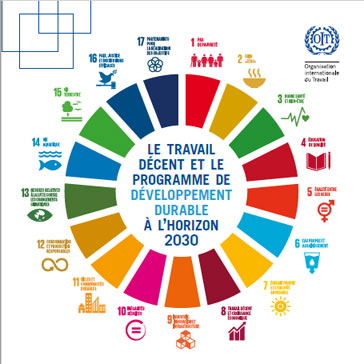
Read: Decent work and the 2030 Agenda for sustainable development

After several years of intensive negotiations and dialogue bringing together not only governments, civil society but also millions of ordinary people around the world, UN member states have unanimously agreed Decent work and the 2030 Agenda for sustainable development.
The 2030 Agenda embraces the three dimensions of sustainability – economic, social and environmental. It has 17 Sustainable Development Goals (SDGs) that will build on the progress achieved:
- No Poverty, Zero hunger
- Good health,
- Quality education,
- Gender equality ,
- Clean water and sanitation and Affordable and clean energy,
- Decent work and Economic growth,
- Industry, innovation and infrastructure,
- Reduced inequalities,
- Sustainable cities and communities,
- Responsible consumption,
- Climate action,
- Life below water and Life on land,
- Peace and justice,
- Partnership for the goals.
.

Read: New Transport Decarbonisation Alliance for Faster Climate Action
Energy:
The International Energy Agency estimates the investments needed for the energy transition to be worth thousands of billions of dollars and that the global temperature does not exceed 2 ° C.
Given an ERF contribution (renewable energy sources) by 2030 of over 55% in the electricity sector and close to 100% in 2050, mechanisms should be put in place to place a market gradually meeting the needs of the basic principles of renewable and less and less fossil energies.
The period 2021-2030 must be devoted to this gradual transformation..
.

The World Bank calculates that demographic and economic growth and increased urbanization - in the absence of an incentive strategy for reuse and recycling - will force us to meet 3.14 billion tons in just over 30 years. urban solid waste each year, compared to 2.01 billion tonnes today
.
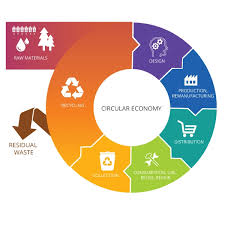
Read: ECONOMIC GROWTH, TECHNOLOGICAL CHANGE,
AND CLIMATE CHANGE
Read: Implementation of the Circular Economy Action Plan
Read:
Resource efficiency and the circular economy
The world's need for raw materials is accelerating because of the combined increases in population, living standards and our economic growth model that consumes a lot of natural resources (soil, water, minerals, biomass, etc.).
Withdrawal of resources presents a growing economic and environmental cost: for example, the increasingly difficult access to metal deposits and the natural constraints on biomass production (climate change, limited availability of productive land and land).
In some regions significantly limit the potential for increasing production of these resources at reasonable costs.
The consequence of the increasing use of these resources is a rapid degradation of the quality of some of these resources: climate, natural environments, air, water, soil.
This implies, on the one hand, to produce more wealth by using fewer natural resources (increasing the productivity of resources) and, on the other hand, to reduce the environmental impacts associated with the taking and use of these resources.

Read: European Commission Energy, Climate change, Environment
The European Structural and Investment Funds contribute to the protection and preservation of natural resources such as water, nature and biodiversity, air quality and raw materials.
This involves investing in the infrastructure needed for wastewater treatment and waste management (eg recycling) and taking measures to monitor the state of the environment or create green infrastructure.
In this context, the environment represents a source of economic growth and new employment opportunities.
Cities must become a transition center
for the new economy and a new industrial model
Automotive
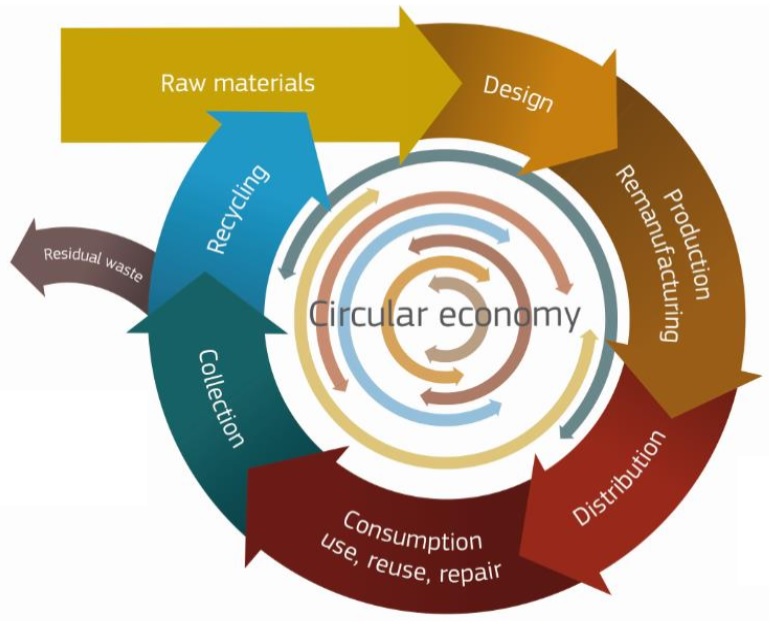
Read: The Circular Economy Applied to the Automotive Industry.
Based on the key concepts of circular economy, current estimates speak of an economic advantage of more than € 1.8 trillion by 2030 if the European Union applies the circular economy, resulting in a increase in GDP ,
Employment and Annual Productivity of Resources
The Renault Nissan Group built a plant in Choisy-le-Roy, France, which has repacked about 60,000 engines and other components a year, apparently at the end of their life .
The circular economy for the automobile means the redesign of a product running with clean energy and not producing emissions, with a modularity allowing it to last longer , supported by a simple and constant maintenance , made with materials totally recyclable although at different phases, also based on a supply chain control that guarantees environmental compatibility.
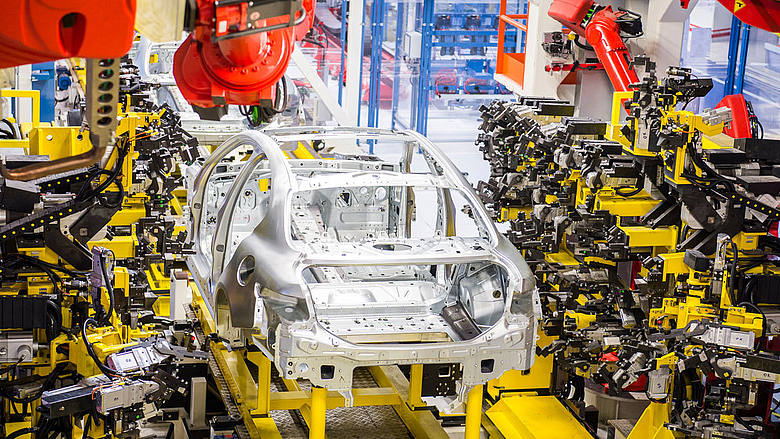
Read: Demanufacturing and Remanufacturing Systems for Circular
Economy
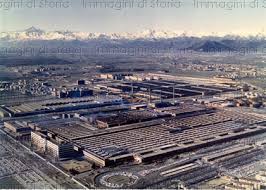
A private car is not used for about 95% of its time. Half car sharing is active for more than 40% of the time.
More and more companies are investing in the recovery of waste and the regeneration ("repackaging") of end-of-life cars , especially for spare parts, thus reducing costs for consumers and the volume of waste destined for landfill.
FiatChrysler Automobiles chose easily recyclable materials, natural fibers such as kenaf and jute, recycled materials such as recycled nylon and reduced water consumption in the supply chain (- 27.5%) from 2010 and waste (-18.7%), also from the 1995 major experiments of the Fiat Auto Recycling project, to rethink the cycle of the car.
The chains must be almost completely redrawn either in the light of the electric motors, or in the light of components which must necessarily be renewed.
According to " World Employment and Social Outlook 2018: Greening with Jobs", action to limit global warming to 2 degrees Celsius will result in sufficient job creation to more than offset job losses of 6 million elsewhere. 
Read: 24 million jobs to open up in the green economy
New jobs will be created by adopting sustainable practices in the energy sector, including changes in the energy mix, promoting the use of electric vehicles and improving the energy efficiency of buildings, Ecosystem services - including air and water purification soil renewal and fertilization, pest control, pollination and protection against extreme weather conditions.
The ILO and UN Environment are committed to leading on this thematic priority.
Decent Jobs for Youth brings together a growing number of partners who are committed to supporting the creation of green jobs and ensuring that young people have the necessary skills to work and thrive in this sector.
Up to 60 million new jobs in the green economy could potentially be created by 2030. If properly managed, green growth can provide an opportunity to address the youth employment challenge while simultaneously preserving the environment and increasing climate resilience.
Creating job opportunities in the green economy requires a balanced set of support services that will make the sector attractive to young people and allow them to be productive while adapting the effects of climate change. Decent Jobs for Youth focuses on supporting policies to boost employment creation through greening economies and sustainable green infrastructure, including responsive skills policies in green sectors. Additionally, existing employment-intensive investments into green growth can be expanded specifically to target young people, and green entrepreneurial competencies for youth will be fostered in collaboration with business development service providers.
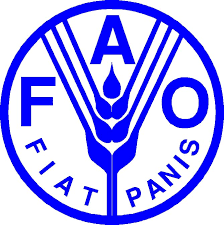
Read: Growing food in greener cities
As cities grow, valuable agricultural land is lost to housing, industry and infrastructure, and production of fresh food is pushed further into rural areas. The cost of transport, packing and refrigeration, the poor state of rural roads, and heavy losses in transit add to the scarcity and cost of fruit and vegetables in urban markets.
Read: THE VICIOUS CIRCLE OF POVERTY AND HUNGER
Read:
Ten years ago, an estimated 40 percent of the developing world's population - or 2 billion people - lived in urban areas. Since then, their numbers have expanded almost twice as fast as total population growth, to more than 2.5 billion. That is the equivalent to almost five new cities the size of Beijing, every 12 months. By 2025, more than half the developing world's population - 3.5 billion people - will be urban.
L'expansion d'Accra se fait au détriment d'environ 2 600 hectares de terres agricoles par an.
By 2020, the proportion of the urban population living in poverty could reach 45 percent, or 1.4 billion people. By then, 85 percent of poor people in Latin America, and almost half of those in Africa and Asia, will be concentrated in towns and cities.
More than half of Beijing's vegetable supply comes from the city's vegetable gardens.
Horticulture in and around Hanoi produces more than 150,000 tons of fruits and vegetables a year.
Poor urban households spend up to 80% of their income on food, making them very vulnerable when food prices rise or their incomes fall.
Links to the latest news letter:
>> TOGETHER WE CHOOSE HOW TO CHANGE DEVELOPMENT
>> THERE IS A LITTLE TIME TO CHANGE THE DEVELOPMENT: we must choose together
: >> THERE IS A LITTLE TIME TO CHANGE DEVELOPMENT: we must choose together
